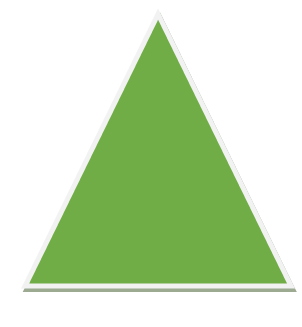

In mathematics, area, and perimeter and area formula are fundamental properties of two-dimensional shapes. Perimeter represents the measurement of the shape's boundary length, while area quantifies the space enclosed by the shape.
The concepts of area and perimeter are crucial in mathematics and find widespread application in everyday life. They are relevant to shapes of various types and sizes, whether they are regular or irregular in form. Each shape has its specific formula for calculating both area and perimeter. Whether you're dealing with geometric figures like triangles, squares, rectangles, circles, spheres, or any other shape, the principles of area and perimeter apply universally and are explained comprehensively for all shapes.What is Area?
Area refers to the enclosed region within the boundaries of an object's shape. It represents the extent of space covered by a two-dimensional geometric figure on a flat plane. The area of a shape is determined by its dimensions and specific properties, and it varies among different shapes. For instance, the area of a square is distinct from that of a kite. When two objects share a similar shape, their respective areas may not be equal unless their dimensions are identical. For instance, consider two rectangular boxes with lengths denoted as L1 and L2 and breadths as B1 and B2. The areas of these rectangular boxes, labeled as A1 and A2, will only be equal if L1 equals L2 and B1 equals B2.What is Perimeter?
Perimeter, in the context of a shape, represents the total distance around the shape's boundaries. Essentially, it measures the length of the shape when expanded in a linear fashion. Perimeter encompasses the entire outline of a two-dimensional figure on a flat plane. The perimeter lengths of different shapes can match each other depending on their respective dimensions.Also Check - Line and Angles Formula
For instance, if a metal wire with a length L is used to form a circle, that same wire can be employed to construct a square with sides of equal length.What is the Difference Between Perimeter and Area?
Area and perimeter are two distinct geometric measurements that describe different aspects of two-dimensional shapes. Here are the key differences between area and perimeter: Definition: Area: Area represents the amount of space enclosed by the boundaries of a two-dimensional shape. It is a measure of the region covered by the shape's interior. Perimeter: Perimeter, on the other hand, is the total length of the shape's boundary or the distance around the outer edge of the shape. It measures the entire boundary length.Also Check - Congruence of triangles formula
Units: Area: Area is measured in square units (e.g., square meters, square inches, square centimeters). The unit involves an area calculation, indicating how many square units are enclosed by the shape. Perimeter: Perimeter is measured in linear units (e.g., meters, inches, centimeters). It is a straightforward measure of length along the shape's boundary.Also Check - Complex number Formula
Representation: Area: Area is represented as a two-dimensional quantity, as it involves the concept of space within the shape. Perimeter: Perimeter is represented as a one-dimensional quantity because it focuses solely on the length along the shape's outline. Purpose: Area: Area quantifies the extent of surface coverage, making it useful for determining quantities like the amount of paint needed to cover a surface or the space enclosed by a fence. Perimeter: Perimeter is used to measure the length required to enclose a region, making it relevant for purposes like calculating the amount of fencing needed or the distance around a track.Download PDF Perimeter and Area Formula
Also Check - Trigonometry Formula
Examples: Consider a rectangular garden: Its area tells you how much ground it covers (e.g., 100 square meters), while its perimeter tells you the length of fencing needed to enclose it (e.g., 40 meters if its dimensions are 10 meters by 20 meters).Area and Perimeter Formula For all Shapes
Various shapes exist, with some of the most common ones including squares, triangles, rectangles, and circles. To calculate their area and perimeter, specific formulas are required. Perimeter and Area of a Rectangle: A rectangle is a geometric shape characterized by opposite sides that are equal in length and all angles equaling 90 degrees. The area of a rectangle represents the space it occupies within a two-dimensional XY plane. Perimeter of a Rectangle: The perimeter of a rectangle can be found using the formula 2(a + b), where 'a' and 'b' are the lengths of its adjacent sides. Area of a Rectangle: To determine the area of a rectangle, multiply the length 'a' by the breadth 'b', represented as a × b. where a and b are the length and width of the rectangle. Perimeter and Area of a Square:
A square is a geometric shape characterized by all four sides being of equal length and all angles measuring 90 degrees. The area of a square corresponds to the space it occupies within a two-dimensional plane, while its perimeter is the distance covered along its outer boundary.
Perimeter of a Square: The perimeter of a square is determined by multiplying the length of one side 'a' by 4, expressed as 4a.
Area of a Square: To calculate the area of a square, square the length of one side 'a', denoted as a^2, where 'a' represents the side length of the square.
In summary, a square's perimeter is found by multiplying its side length by 4, while its area is obtained by squaring the side length 'a'.
Perimeter and Area of a Square:
A square is a geometric shape characterized by all four sides being of equal length and all angles measuring 90 degrees. The area of a square corresponds to the space it occupies within a two-dimensional plane, while its perimeter is the distance covered along its outer boundary.
Perimeter of a Square: The perimeter of a square is determined by multiplying the length of one side 'a' by 4, expressed as 4a.
Area of a Square: To calculate the area of a square, square the length of one side 'a', denoted as a^2, where 'a' represents the side length of the square.
In summary, a square's perimeter is found by multiplying its side length by 4, while its area is obtained by squaring the side length 'a'.
 Perimeter and Area of a Triangle:
A triangle consists of three sides. Consequently, the perimeter of any triangle, whether it is scalene, isosceles, or equilateral, is determined by adding up the lengths of all three sides. The area of a triangle represents the space it occupies within a flat plane.
Perimeter of a Triangle: The perimeter of a triangle is calculated by adding the lengths of all three sides, denoted as a + b + c, where 'a', 'b', and 'c' are the lengths of the three different sides of the triangle.
Area of a Triangle: To compute the area of a triangle, multiply half of the base 'b' by the height 'h', expressed as (1/2) × b × h. Here, 'b' represents the base of the triangle, and 'h' is the height.
In summary, the perimeter of a triangle is found by summing the lengths of its three sides, while the area is determined by multiplying half of the base 'b' by the height 'h'.
Perimeter and Area of a Triangle:
A triangle consists of three sides. Consequently, the perimeter of any triangle, whether it is scalene, isosceles, or equilateral, is determined by adding up the lengths of all three sides. The area of a triangle represents the space it occupies within a flat plane.
Perimeter of a Triangle: The perimeter of a triangle is calculated by adding the lengths of all three sides, denoted as a + b + c, where 'a', 'b', and 'c' are the lengths of the three different sides of the triangle.
Area of a Triangle: To compute the area of a triangle, multiply half of the base 'b' by the height 'h', expressed as (1/2) × b × h. Here, 'b' represents the base of the triangle, and 'h' is the height.
In summary, the perimeter of a triangle is found by summing the lengths of its three sides, while the area is determined by multiplying half of the base 'b' by the height 'h'.
 Area and Circumference of a Circle:
The area of a circle represents the space enclosed by it within a two-dimensional plane.
Circumference of a Circle: The term used for the distance around the outer boundary of a circle is its circumference. It is calculated using the formula 2πr, where 'r' is the radius of the circle.
Area of a Circle: To calculate the area of a circle, use the formula πr^2, where 'r' is the radius of the circle. This formula expresses the extent of the space within the circle's boundary.
In summary, the circumference of a circle is determined by 2π times the radius ('r'), and the area of a circle is found by π times the square of the radius ('r^2').
Area and Circumference of a Circle:
The area of a circle represents the space enclosed by it within a two-dimensional plane.
Circumference of a Circle: The term used for the distance around the outer boundary of a circle is its circumference. It is calculated using the formula 2πr, where 'r' is the radius of the circle.
Area of a Circle: To calculate the area of a circle, use the formula πr^2, where 'r' is the radius of the circle. This formula expresses the extent of the space within the circle's boundary.
In summary, the circumference of a circle is determined by 2π times the radius ('r'), and the area of a circle is found by π times the square of the radius ('r^2').

Applications of Area and Perimeter
We understand that area represents the extent of space covered by various shapes, while perimeter signifies the distance around those shapes. These measurements are crucial for practical purposes. For instance, when planning to paint the walls of a new home, it's essential to determine the area in order to calculate the amount of paint needed and the associated cost. For instance, when considering fencing for a garden, the required length of fencing material corresponds to the garden's perimeter. If the garden takes the shape of a square, with each side measuring 'a' centimeters, the perimeter would be 4a centimeters. Area, on the other hand, relates to the space enclosed within a shape or figure and is measured in square units. To illustrate, if you intend to tile the floor of your new home, it becomes crucial to calculate the floor's area to determine the quantity of tiles required to cover the entire surface.Solved Examples on Area and Perimeter
Example 1:
If a circle has a radius of 21 centimeters, determine its area and circumference.Solution:
Given the radius as 21 cm, Area can be calculated using the formula: Area = π × r² Area = (22/7) × 21 × 21 Area = 1386 square centimeters (sq. cm) Circumference, denoted as C, is calculated as follows: C = 2πr C = 2 × (22/7) × 21 C = 132 cmExample 2:
Suppose a square has a side length of 11 cm. Find its area and the total length of its perimeter.Solution:
Given the side length 'a' as 11 cm, Area can be determined as follows: Area = a² = 11² = 121 sq. cm The total perimeter, represented as Perimeter, is calculated as: Perimeter = 4a = 4 × 11 = 44 cmExample 3:
For a rectangular field with a length of 12 meters and a width of 10 meters, find the field's area and perimeter.Solution:
Given the length as 12 meters and the width as 10 meters, Area can be found using the formula: Area = length × width = 12 × 10 = 120 sq. meters (sq. m) The perimeter, represented as Perimeter, is determined as: Perimeter = 2 × (length + width) = 2 × (12 + 10) = 2 × 22 = 44 meters (m)Perimeter and Area Formula FAQs
What distinguishes area from perimeter?
Area represents the space enclosed by a shape or figure, while perimeter measures the distance along the outer boundary of that shape. The unit of measurement for area is given in square units or unit², and the unit for perimeter is the same as the chosen linear unit.
What is the formula for calculating perimeter?
The formula for the perimeter of any polygon is the sum of all its sides:
Perimeter = Sum of all sides
What are the formulas for the area and perimeter of a circle?
A circle, being a curved shape, is characterized by its radius when calculating area and perimeter:
Area of a circle: πr²
Perimeter or circumference of a circle: 2πr
Could you provide an example of calculating perimeter and area?
Certainly, if a square possesses a side length of 2 cm:
Area of the square = side² = 2² = 4 cm²
Perimeter of the square = sum of all sides = 2 + 2 + 2 + 2 = 8 units
🔥 Trending Blogs
Talk to a counsellorHave doubts? Our support team will be happy to assist you!

Check out these Related Articles
Free Learning Resources
PW Books
Notes (Class 10-12)
PW Study Materials
Notes (Class 6-9)
Ncert Solutions
Govt Exams
Class 6th to 12th Online Courses
Govt Job Exams Courses
UPSC Coaching
Defence Exam Coaching
Gate Exam Coaching
Other Exams
Know about Physics Wallah
Physics Wallah is an Indian edtech platform that provides accessible & comprehensive learning experiences to students from Class 6th to postgraduate level. We also provide extensive NCERT solutions, sample paper, NEET, JEE Mains, BITSAT previous year papers & more such resources to students. Physics Wallah also caters to over 3.5 million registered students and over 78 lakh+ Youtube subscribers with 4.8 rating on its app.
We Stand Out because
We provide students with intensive courses with India’s qualified & experienced faculties & mentors. PW strives to make the learning experience comprehensive and accessible for students of all sections of society. We believe in empowering every single student who couldn't dream of a good career in engineering and medical field earlier.
Our Key Focus Areas
Physics Wallah's main focus is to make the learning experience as economical as possible for all students. With our affordable courses like Lakshya, Udaan and Arjuna and many others, we have been able to provide a platform for lakhs of aspirants. From providing Chemistry, Maths, Physics formula to giving e-books of eminent authors like RD Sharma, RS Aggarwal and Lakhmir Singh, PW focuses on every single student's need for preparation.
What Makes Us Different
Physics Wallah strives to develop a comprehensive pedagogical structure for students, where they get a state-of-the-art learning experience with study material and resources. Apart from catering students preparing for JEE Mains and NEET, PW also provides study material for each state board like Uttar Pradesh, Bihar, and others
Copyright © 2025 Physicswallah Limited All rights reserved.
Get App










